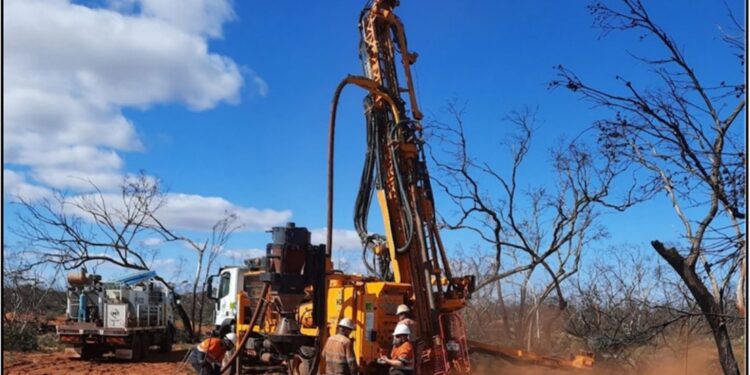Galileo Mining Ltd (ASX: GAL) has commenced an RC drilling campaign the company’s highly prospective Fraser Range project in Western Australia.
Multiple targets, including follow up of Galileo’s previous drilling at the Empire Rose prospect in 2018 and 2019, will be tested in the current drill campaign.
Managing Director Brad Underwood said the Empire Rose prospect is located at the southern end of the Fraser Range and is just 30km from IGO’s operating Nova nickel mine in a highly prospective location of the mineral belt.
“We are excited to begin our first drill campaign of 2022 with a number of high-quality geological and geophysical targets at our Fraser Range project,” Mr Underwood said.
“We plan to have initial geological results to the market after the completion of drilling and with assay results to be returned from the laboratory in April/May 2022.
“We are also expecting to receive in March all of the assays from 8,700 metres of aircore drilling completed at our Norseman project in late 2021. We already know the Norseman area is prospective for palladium and nickel sulphides, based on our massive sulphide intercept and EM survey results, and we are hoping that the aircore results to come will lead to additional targets for follow-up drill testing.”
Five targets are planned for testing in the current drill campaign. Two targets are related to geological positions developed from aircore drilling and the remaining three targets have been established through a combination of EM surveying and magnetic interpretation.
Previous aircore drilling delineated a peridotite sill, an ultramafic unit prospective for nickel mineralisation
The best nickel result from aircore drilling was 36m @ 0.2% nickel in saprolite (ERAC015).
An RC drill hole has been planned to test beneath ERAC015 to assess the potential for disseminated nickel sulphides in the large and strike extensive sill.
Aircore drilling also identified a pyroxenite sill with petrographical work showing the rock to most likely be of cumulate origin.
The presence of minor pyrrhotite in the petrographic sample also suggests the possibility for this unit to contain disseminated mineralisation in fresh rock at depth.
An RC drill hole has been designed to drill beneath the aircore intersection to test the pyroxenite unit for nickel sulphide fertility.
Three targets adjacent to a large magnetic anomaly have been defined utilising EM data in conjunction with magnetic and geological interpretation (EM1, EM2, & EM3) The EM targets are moderately to weakly conductive models that may represent accumulations of disseminated to semi-massive sulphides.
Diamond drilling in 2019 showed that previously tested EM anomalies in the area were related to sulphide mineralisation with minor gold anomalism.
Geological review of all available data suggests that the targets currently been considered may be caused by sulphide mineralisation however EM anomalies can result from a variety of sources including non-economic sulphides, graphite, or sulphidic sediments. The initial program includes a single drill hole into each of these target zones with follow up drilling as required.
Multi-element assaying, petrographical analysis, and down hole EM surveying will be undertaken upon the completion of drilling. Laboratory assays are expected to be received in April/May as the continued high demand for laboratory services results in longer than standard turnaround times.
For further information please visit: http://www.galileomining.com.au/












